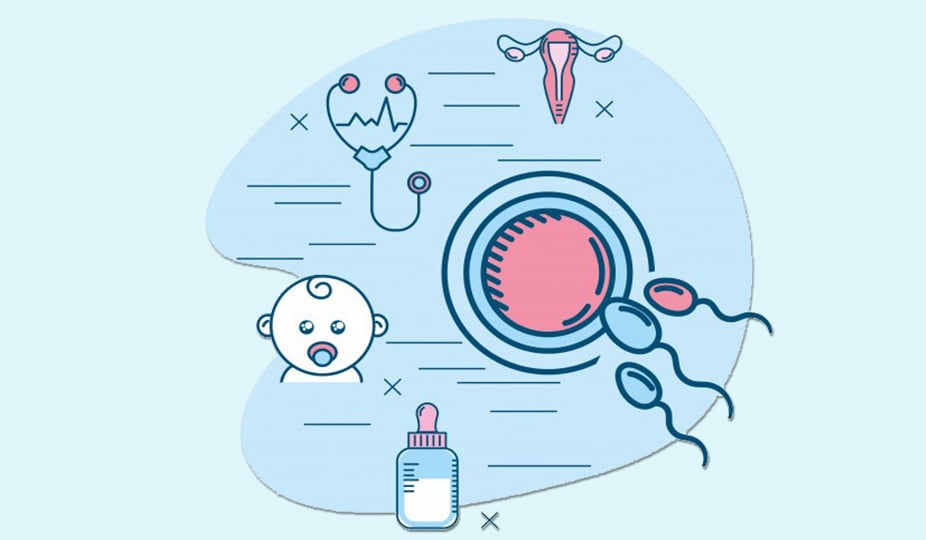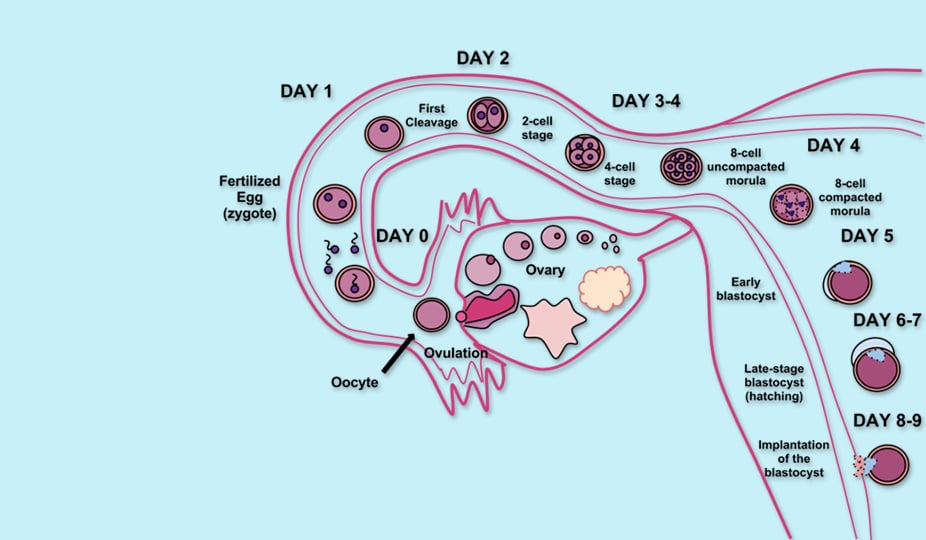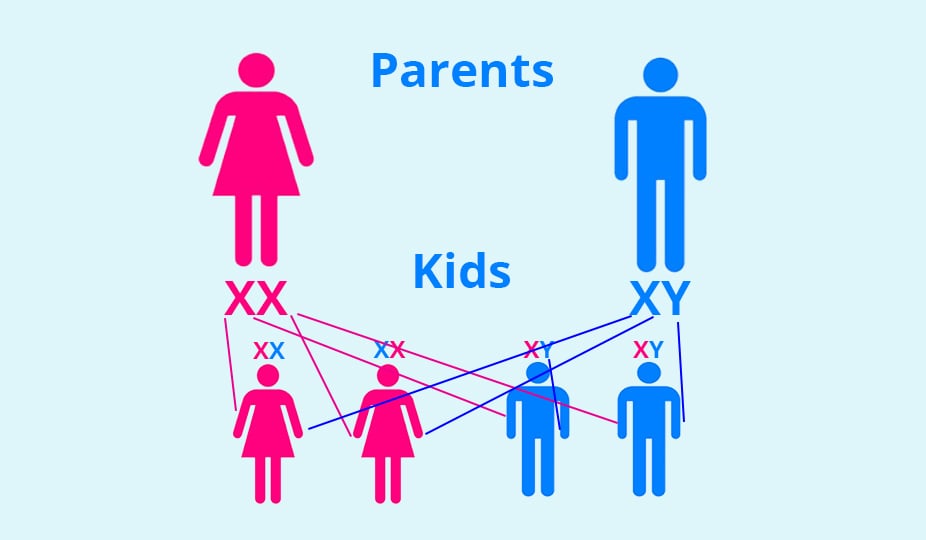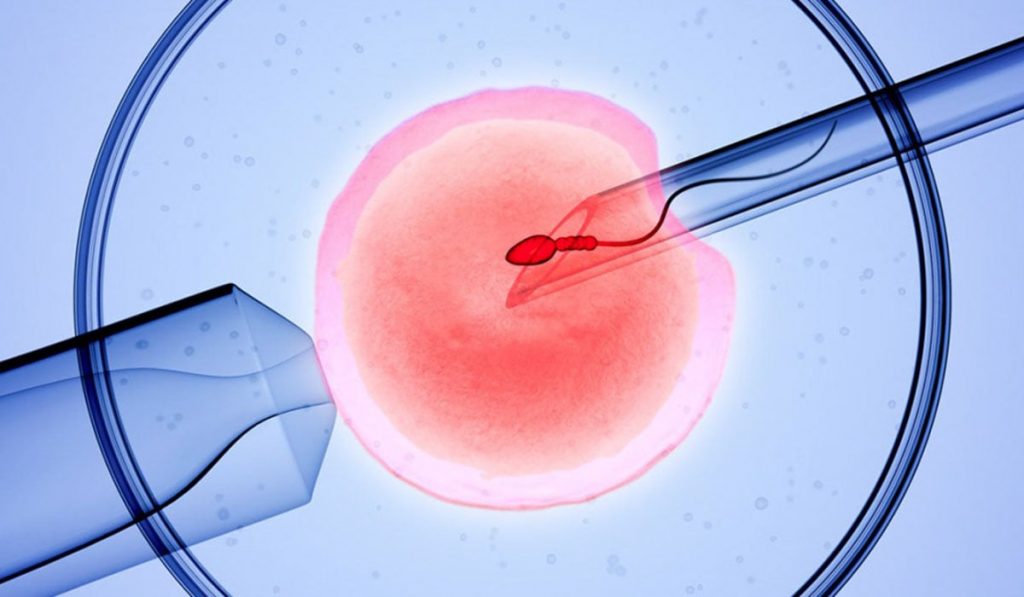Where Does Fertilization Take Place? – Fallopian Tubes and Pregnancy
Want to know where does fertilization take place? Fertilization occurs in the fallopian tubes. Only one sperm gets the chance to inseminate the egg. Its nucleus merges with the egg cell and gives start to pregnancy.

Before this miracle happens, they have to pass a long way. That’s why, in this post, we will overview the whole process so that you could see what happens on every stage.
Natural Fertilization Takes Place in Fallopian Tubes
A woman is born with two ovaries. Each of the ovaries contains about 200 thousand immature eggs. By the period of puberty, 400-500 eggs fully develop and mature.
1. Where Does Fertilization Take Place during Natural Intercourse?
Around the middle of the menstrual cycle, once a month, women have ovulation. A mature egg leaves its follicle in the ovary and enters the fallopian tube. Within a few hours after ejaculation, the sperm moves along the female genital tract to meet the egg.

Nevertheless, its way won’t be that easy. On its way, it will meet both helping and killing factors that are a part of the natural selection process. Cervical mucus will help the sperm to move and survive. However, women’s immune cells and the acidic genital environment will cause considerable problems to the spermatozoa and kill most of them. More than that, the strongest spermatozoa will have to pass the radiant crown and lining of the egg.
When the strongest ones meet the ovum, they start an acrosomal reaction to release enzymes that dissolve the ovum. All spermatozoa try to penetrate the egg, but in reality, only the fastest one fertilizes it and gives start to the pregnancy.

Within the next 2 hours, male and female nuclei come close to each other. Genetic material combines, and they form a zygote with a double set of chromosomes. A zygote is a unicellular embryo.
2. Embryo Moves into the Uterus
Immediately at the moment of fertilization, zygote starts to move through the fallopian tube into the uterine cavity. Its mucous membrane covered with cilia also contributes to the transportation of the embryo.
3. Embryo Divides
Zygote division begins immediately after fertilization and lasts for approximately three days. During this period, the size of the embryo does not increase, with each subsequent division, the formed cells become smaller. Embryonic cells at the fragmentation stage are called blastomeres.

As a result of the division, a multicellular embryo, called the morula, is formed from the zygote. At this stage, the embryo enters the uterine cavity, where implantation occurs.
4. Embryo Implantation
The next important step, which signifies the pregnancy is implantation. The embryo needs to adhere to the wall of the uterus to receive nutrition and oxygen from the mother.

Immediately before implantation, the blastocyst is released from its membrane (hatching) and connects with special receptors by the uterine mucosa – the endometrium. From now on, the mother`s organism will create placenta around the embryo, feed and support it.
What Are the Conditions for Successful Natural Conception?
As you can see, the fertilization process takes place in the tubes, but the pregnancy strongly depends on other important factors and conditions.
- First of all, the ovum has to mature in the ovary and lead to ovulation.
- There must be a sufficient amount of motile sperm cells that can penetrate fallopian tubes and fertilize the egg.
- The egg must get into the fallopian tube in time to meeting with spermatozoa.
- Subsequently, the embryo must easily pass through the fallopian tube and enter the uterine cavity to successfully implant and begin its development.
If all those conditions are met, with a regular sexual life of spouses, the probability of pregnancy is 15-20% in one menstrual cycle of a woman.
Therefore, a fertile couple of childbearing age that has regular sexual intercourse can make a baby in 1-6 month on average. However, if all the pregnancy doesn’t occur after 12+ months of tries, it can be a sign of infertility. In this case, they should consult the expert or opt for assistive fertilization technologies.
How Does Fertilization Lead to Twins?

During ovulation and fertilization of two (or more) eggs, two or more embryos form at the same time. They are the result of 2 different eggs and sperm cells and have different genetics, separate placentas, and inner sacks. These babies are fraternal twins. They will look similar, like two sisters or brothers, and can be of different sexes. Occasionally, fraternal twins can have different skin, eye, and hair color.
Woman gets pregnant with fraternal twins when fertilization takes place.
If two embryos develop from the same egg, then they are identical twins. They are always the same sex and look almost the same and share the same genes. Identical twins are of the same sex.
Woman gets pregnant with identical twins in the moment of an embryo implanting.
Sex of Your Future Baby Defines in the Moment of Fertilization
There are multiple misconceptions about particular conditions, like food, day of intercourse, or sex pose, that can help you get pregnant with a boy or girl. Human nature is much more complicated than that. During the natural fertilization, you can`t predefine or influence the sex of your future baby. That’s because you can’t choose which sperm cell with genetic material will penetrate the egg. Let’s explain why.
Each sperm cell has 23 chromosomes, that is half of the chromosomes a future baby needs. The egg nucleus also has 23 chromosomes. When a sperm approaches the egg, they merge into a single whole – a zygote. The zygote contains 46 chromosomes (23 from the mother and 23 from father).

Particular chromosomes that define the sex of the future human are called X and Y. Egg cell has only XX chromosomes. Half of the sperm contains chromosome X, and the other half contains chromosome Y. If an X-containing sperm fertilizes the egg (X+X), you will have a girl. However, if a Y-containing sperm merges with it (X+Y) – you will have a boy.
During the natural conception, nobody knows which sperm will win the race, that`s why predefining the sex of your future baby is impossible. An exception can be during the IVF (In Vitro Fertilization), which happens in the laboratory where doctors can pick the sperm cells and embryos.
Where Does Fertilisation Take Place during IVF?
In Vitro Fertilization (IVF) procedure has been used for over 40 years. It is widespread worldwide because it can help when the natural conception is impossible due to physiological, psychological, or unidentified factors.
IVF fertilization takes place in the laboratory outside of the woman’s body. Doctors retrieve healthy mature eggs of the women or egg donor, fertilize them with sperm in a Petrie dish, and cultivate the embryos.

After that, they choose 1-5 embryos and transfer them into the uterine cavity. Their further development occurs naturally and ends with the birth of the baby.
A dozen years ago, the IVF procedure was the cause of debates, moral and ethical concerns. Previously, the level of available technologies allowed women to become pregnant after planting 3-8 embryos, resulting in multiple pregnancies and very often twins and triples.
Today, with the development of unique cryopreservation technology, embryo survival has increased substantially, so the need to transfer more than 1-2 embryos has been eliminated.
The procedure of IVF helps with many cases of infertility, with complete obstruction or absence of fallopian tubes or insufficient quantity or quality of sperm in a man.
Modern IVF fertilization occurs in several possible ways. One of its most progressive technologies is ICSI.
How Does ICSI Fertilization Occur?
The ICSI (Intracytoplasmic Sperm Injection) method involves the introduction of sperm into the egg using a thin sharp needle. Doctors can carry ICSI with a small amount of sperm, sperm immotility, or problems with ejaculation. Even if the man doesn’t ejaculate, they can obtain the sperm via testicular puncture.

Also, the ICSI technique is the best for fertilization in patients older than 40.
How to Choose the Fertility Expert and Clinic?
Thanks to the achievements of modern medicine, people with fertilization problems have a chance to become parents. But, of course, to overcome this problem, you need to be especially careful in choosing the clinic and fertility specialists. The first thing to check is the equipment and technical level of the clinic. IVF evolves every year and pregnancy success may directly coincide with the quality of technologies they use. Do not forget to ask about the reputation of doctors, their qualifications, and work experience.

Sunshine fertility agency is an excellent example to mention. We are cooperating with the medical center all over the world. We collaborate with the best clinics and highly qualified doctors. Some of them have been dealing with in vitro fertilization for more than 30 years. All our employees have certificates confirming their right to work in the field of reproductive medicine.
But the statistics will say more than words. Thanks to sunshine IVF agency, more than 2000 children were born. To solve infertility problems, our centers provide a wide range of medical services at affordable prices. We serve clients 27/7, including holidays and weekends. And, most importantly, all clients can contact their fertility experts round-the-clock.
Want to know the answer to your fertility questions – don’t hesitate to contact us and use free consultancy of our experts. We are here to help you give birth to your dream baby!